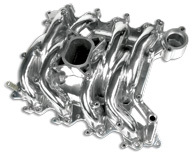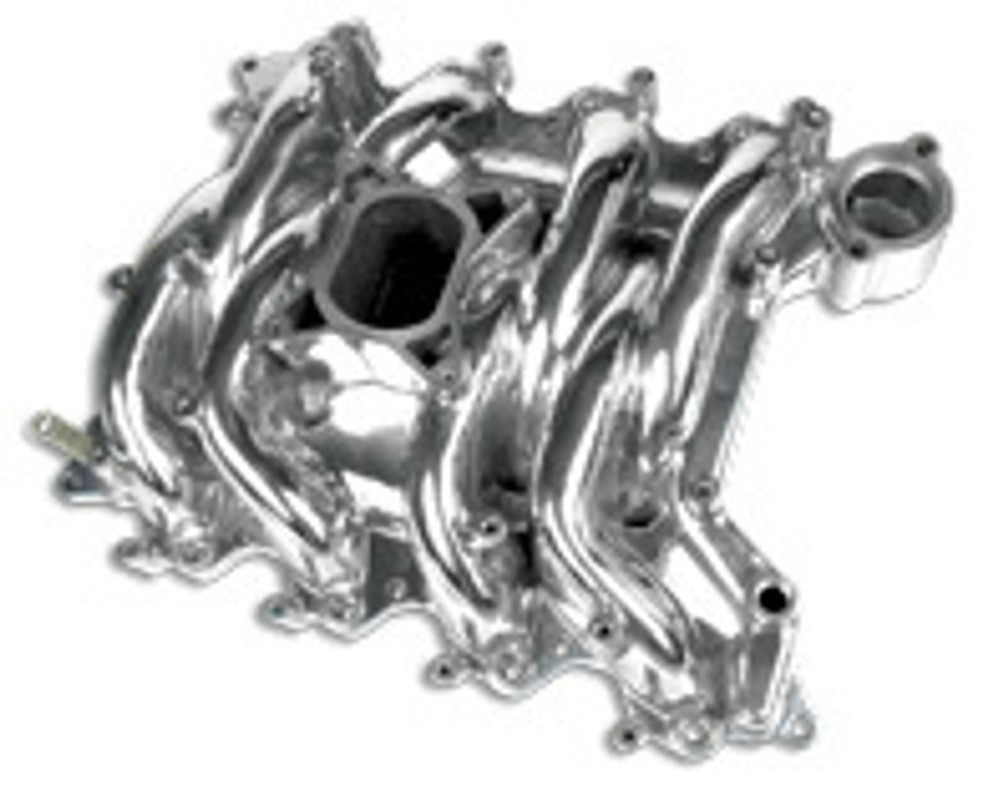Upgrading your Mustang's Intake Manifold - What You Need to Know

Thinking about replacing your Mustang's intake manifold? Here's what you need to know from what this modification can do to what it takes to get it done.
How Does an Intake Manifold Affect Performance?
Some manifolds work really well with high RPM builds, while others offer more power at midrange engine speeds. Most of this difference comes down to the runners going between the throttle body and the intake ports. In general, small, long runners will maintain air velocity at low speeds for more low end grunt, while large, short runners will flow better at high speeds for better top end performance. Aftermarket manifolds are also offered with wider openings to match up with wider throttle bodies.
Many aftermarket manifolds are designed to sit above the engine instead of in the V. This means less heat transfer between the engine and intake. Later engines come with intakes from the factory made out of a composite instead of metal. This insulates the intake gases from engine heat. Some aftermarket parts go this route, while others use metal to handle higher intake pressures.
What Do I Need to Replace My Engine's Manifold?
On V engines, the intake manifold is on top of the engine, within easy reach. Coolant lines run through some manifolds, so the system may need to be drained before the manifold is replaced. A torque wrench is also needed to ensure the manifold is perfectly flat against the engine to ensure a tight seal. In some cases, the wiring harness may need to be modified to go around the new manifold.
If the new intake is radically different from the stock unit, the ECU will need to be altered to handle the change in air flow.
OHV 5.0 Intake Manifolds
Depending on the model, the manifold can be cast as a single piece, or separated into an upper and lower plenum. This gives some extra flexibility when choosing the right intake runner size for your application.
On '94-'95 Mustangs, the throttle body was repositioned, sitting at an angle instead of straight across from the manifold. An adapter is needed to maintain the stock throttle body position when using manifolds designed for earlier engines.
4.6 Liter Two Valve Intake Manifolds
These manifolds use an upper plenum that connects the throttle body to the lower plenum, which channels the air toward the intake ports. The Performance Improvement (P.I.) heads use a different intake shape compared to standard heads, so they need a different manifold design.
Some Mustangs built between 1997 and 2001 use a composite intake manifold with metal inserts to attach the coolant line. Over time, this manifold can fail, either due to separation between the metal inserts, or from stresses from the alternator mounting bracket, which is attached to the front runner on the manifold.
Ford redesigned the manifold for 2002 engines, replacing the front runner and thermostat housing with a cast aluminum piece. This new design is a direct replacement for the old manifold, and by now most cars should have the replacement intake. Many aftermarket manufacturers offer solid metal plenums.
4.6L 3 Valve Engines
These engines use a single piece composite intake manifold from the factory. Due to their height, some aftermarket manifolds can interfere with some strut tower bars.
Which Manifold is Right for My Car?
Anderson Ford Motorsport has been tuning, testing and racing modified Mustangs since Fox bodies were still new, and we know what works. We sell a range of manifolds and can help you pick the right setup to work with your build.
Recent Posts
-
Bringing the Fox Body Mustang into the 21st Century with Holley Terminator X
Anderson Ford Motorsport has been in the Fox Mustang performance industry since 1989. One of the bi …22nd Oct 2021 -
Roush Supercharger install on a 2019 Ford Mustang
Check out this 2019 Ford Mustang before and after we installed a Roush Supercharger. …21st Feb 2020 -
All Blower Installations are not Equal.
Why Should You Choose a Company to Install Your Blower That Has a Dyno Facility In-House?Are all de …24th Jan 2020


